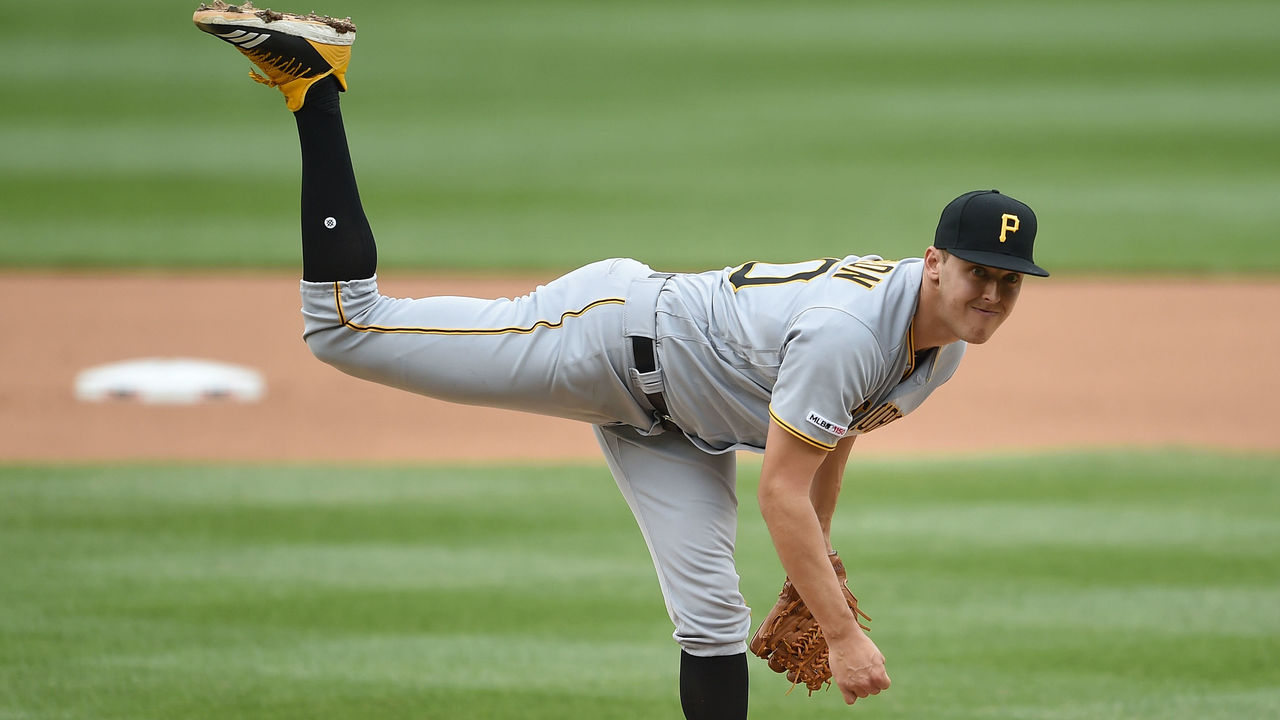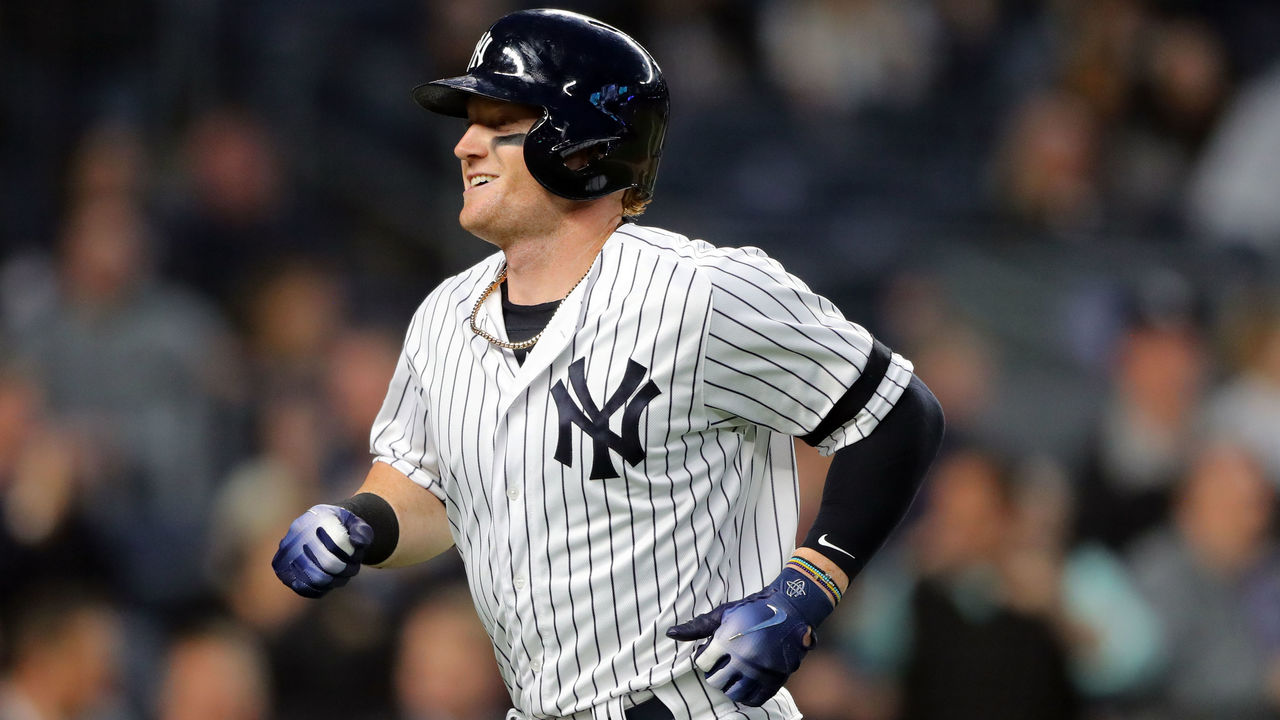Fantasy Baseball Digest: Avoiding uneven trades, finding stopgaps
Welcome to theScore's Fantasy Baseball Digest.
This week on the digest, we take an early look at trades and continue last week's look into possible injury replacements that could be found on the waiver wire. With infielders out of the way, we'll shift focus to two outfielders, two starters, and one reliever available in most leagues who may help right the ship.
Ownership percentages courtesy: Yahoo Fantasy Sports
Stats as of Saturday, April 20.
Navigating trade season

Trades in fantasy baseball have grown trickier over the years. With such a wealth of information available to everyone, even more passive players are likely to eye trade offers with added scrutiny.
One type of trade that pops up quite often is the old two-for-one, and they're often misguided. If you receive an offer of two players for one player on your team, you may be tempted simply by the volume. This philosophy is problematic because the team surrendering the lone player is almost certainly relinquishing the best in the deal.
For this to truly work, the difference in value between the best player and the two replacing him cannot be wide, and it's essential that the two returning pieces are relatively close to one another. There is also a risk on the other side, especially in deeper leagues, because the waiver wire may not yield a decent-enough replacement to make the acquisition worth it.
An example: I was offered starter Noah Syndergaard for right-handers Jameson Taillon and Jon Gray. It's an auction-based keeper league, and Syndergaard is a reasonable $17 to keep compared to Taillon who would have cost me $21 to hold onto for another year.
But I was still reluctant because of Syndergaard's injury risk and the fact that the rest of my pitching staff is kind of in shambles (curses, Nick Pivetta). Syndergaard's ceiling is definitely the highest of the three due to solid strikeout rates for his career (9.99 K/9). Gray will always be risky pitching half his games in Colorado, but he's shown flashes and has been excellent to start the season. Taillon, despite his vaunted pricetag, has an excellent floor thanks to low walk totals. If Syndergaard's healthy, he is still the best arm in the deal, though, because he typically doesn't issue free passes, either.
I got lucky. This was a perfectly fair offer. I countered, asking for White Sox lefty Carlos Rodon alongside Syndergaard, which should have gotten me an auto-rejection based on his sparkling start to the season. My opponent countered with an offer of Syndergaard and Kenta Maeda for Gray and Taillon, and that was that. Trade accepted.
So, let us know who you think won this deal.
Not everyone will share my aversion for uneven trades - receiving the two players will also force another roster move to create space, which isn't always easy - but it's up to you to learn your rivals' quirks and preferences.
World-of-hurt waiver options: Part 2

- Who's hurt: Giancarlo Stanton - OF, Yankees
- Best waiver option: Clint Frazier - OF, Yankees (31 percent owned)
- Analysis: Frazier has finally started living up to his potential with opportunities opening up due to the litany of Yankees injuries. He's hitting the cover off the ball, with a .351/.371/.649 slash line, five homers, and 14 RBIs in 14 games. He's making a case to stick with the club once it gets healthy and he's still available in most leagues. Even if it's a temporary move, it can pay huge dividends.
- Who's hurt: Aaron Hicks - OF, Yankees
- Best waiver option: Avisail Garcia - OF, Rays (12 percent owned)
- Analysis: The marriage between Baby Miggy and Tampa Bay is working out so far. Garcia has been tearing it up in the last two weeks for the first-place Rays, boasting a 1.058 OPS in 49 at-bats to go along with four home runs and 10 RBIs. He's been around the block for a while so many forget that he's still only 27 years old. Garcia is just one season removed from an All-Star campaign in 2017 that saw him produce a head-turning .330/.380/.506 slash line in 136 games for the Chicago White Sox.
- Who's hurt: Luis Severino - SP, Yankees
- Best waiver option: Sonny Gray - SP/RP, Reds (45 percent owned)
- Analysis: Owners may still feel burnt by Gray's abysmal tenure with the Yankees - particularly in starts at Yankee Stadium. Though he's yet to win a game, he has 22 strikeouts in 19 1/3 innings and owns a 2.79 ERA. That he's not on the majority of fantasy rosters yet is baffling. He will get a test against the Atlanta Braves on Tuesday.
- Who's hurt: Blake Snell - SP, Rays
- Best waiver option: Mike Soroka - SP, Braves (23 percent owned)
- Analysis: Snell is expected to only miss one start after breaking his toe. Why not take a flier on Soroka for his next game against the Reds. If he's terrible, drop him. If he's great, find another player to drop to make room for Snell. Soroka was sharp in his first outing, allowing one run over five innings while striking out six.
- Who's hurt: Arodys Vizcaino - RP, Braves, David Robertson - RP, Phillies
- Best waiver option: Hector Neris - RP, Phillies (23 percent owned)
- Analysis: If you've lost multiple closers to injury, you're probably better off rostering high-volume strikeout relievers instead of chasing saves. Neris is a decent, if volatile, option to close out games with Robertson out. If he doesn't, he'll still get strikeouts at a pretty smooth clip (11.39 K/9 for his career). Otherwise, someone like the Rays' Yonny Chirinos can offer multiple innings per appearance in his role following up openers.
Jason Wilson is theScore's resident fantasy baseball obsessive and has watched "Bull Durham" 87 times. He can be found on Twitter at @Jason_C_Wilson